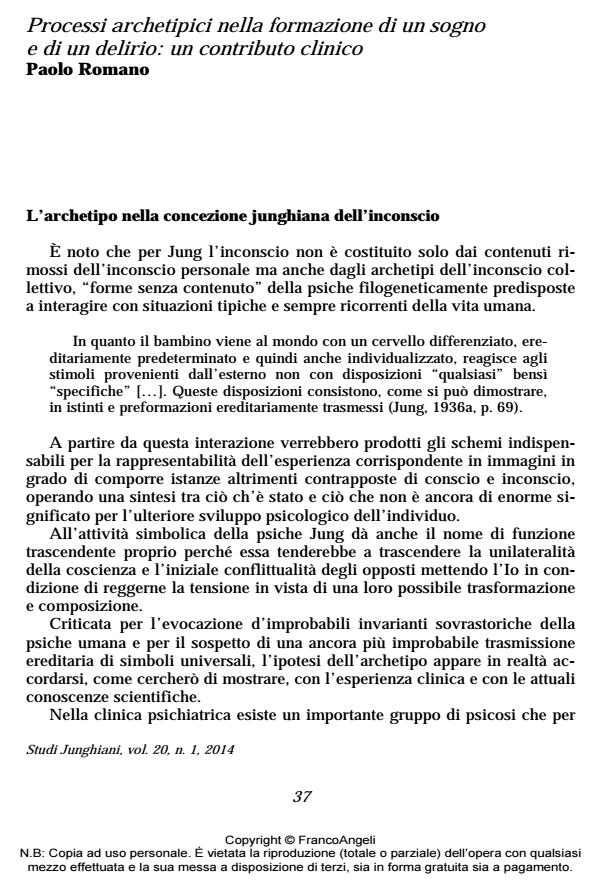Archetypal processes in the formation of a dream and a delusion: a clinical contribution
Journal title STUDI JUNGHIANI
Author/s Paolo Romano
Publishing Year 2014 Issue 2014/39
Language Italian Pages 10 P. 37-46 File size 56 KB
DOI 10.3280/JUN2014-039003
DOI is like a bar code for intellectual property: to have more infomation
click here
Below, you can see the article first page
If you want to buy this article in PDF format, you can do it, following the instructions to buy download credits

FrancoAngeli is member of Publishers International Linking Association, Inc (PILA), a not-for-profit association which run the CrossRef service enabling links to and from online scholarly content.
After reviewing the concept of the archetype suggested by Jung in his theory of the unconscious, the Author proposes its clinical application to the interpretation of a dream and a delusional system, adding some considerations on the meaning of the symbols they contain. In particular, he shows how they could have been produced for metaphorical extension by those archetypal experiences that in the evolutionary history of man have accompanied the differentiation of our human needs from those of our animal ancestors.
Keywords: Archetype, unconscious, archetypal images, dream, delusion
Paolo Romano, Processi archetipici nella formazione di un sogno e di un delirio: un contributo clinico in "STUDI JUNGHIANI" 39/2014, pp 37-46, DOI: 10.3280/JUN2014-039003